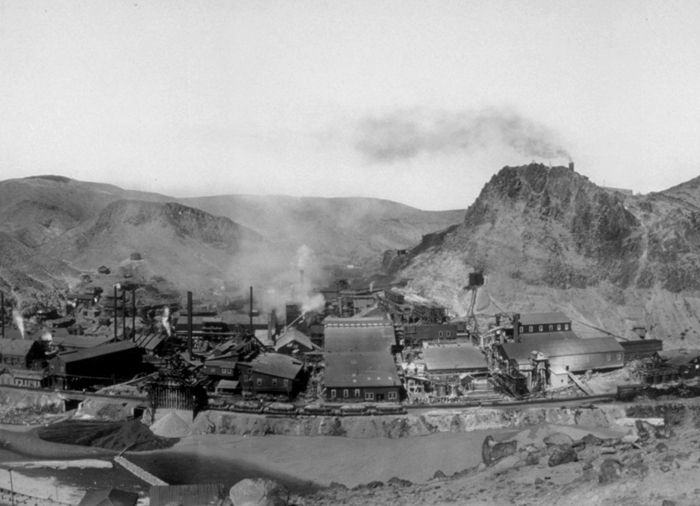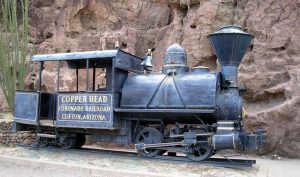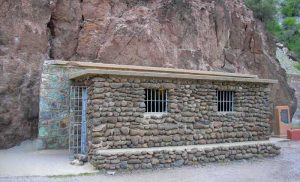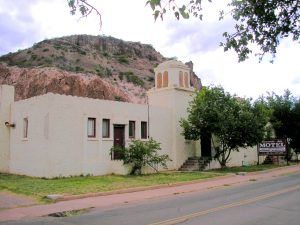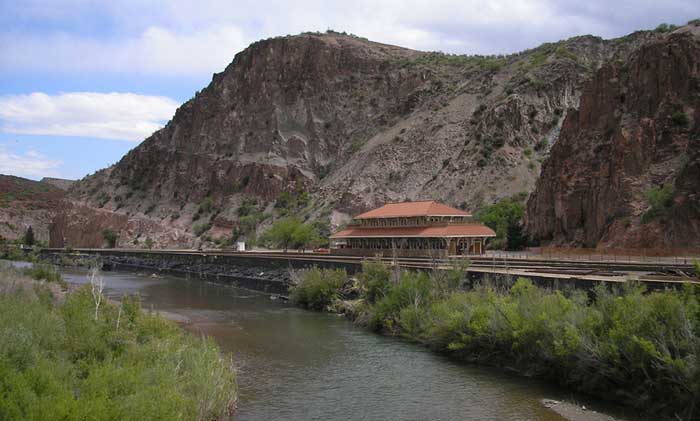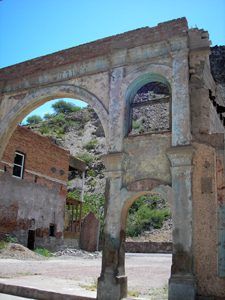Clifton, Arizona – Mining Copper Through Thick and Thin – Legends of America (original) (raw)
View of Clifton, Arizona by Kathy Alexander.
~~
Clifton, a once-booming frontier mining town in southeast Arizona, has suffered through labor strikes and the ups and downs of mining and floods, yet still survives and is the location of one of the world’s largest deposits of copper.
It was Army Scouts on the trail of Apache Indians who first noted the canyon had copper in 1869 and even found evidence of primitive mining, although some sources indicate in the mid-1860s, Arizona Gold Miner Henry Clifton had already found the mineral. It would be three years before prospectors returned to the area, first establishing Goulding’s Camp, named for one of the early miners.
Clifton, Arizona Mining by the West coast Art Company, 1909.
Near the San Francisco River and Chase Creek’s confluence, and the birthplace of noted Apache leader Geronimo, Clifton was founded a year later in 1873. As the claims grew, so did the mining companies. The largest mine at the time was the Longfellow, about three miles up the canyon from town, and owned by brothers Henry & Charles Lesinsky. In 1874 the Longfellow Copper Mining Company expanded its operations, building a more efficient smelter where Chase Creek emptied into the San Francisco River. Other area mining companies that would be created in the area were the Arizona Copper Company and Detroit Copper Company.
Copper Head Coronado Railroad, Clifton, Arizona
In 1879, Arizona Territory’s first steam-powered railroad was built by the Lesinskys to bring ore in from the mine to the smelter. Over the next 20 years, 10 “baby gauge” locomotives were purchased, called so due to the fact that the track was only 20 inches wide, compared to a regular narrow gauge at 36 inches and standard gauge 58 inches wide. Only one of the ten original locomotives remain in Clifton, the Copper Head, retired in 1922 and on display next to the Clifton Cliff Jail.
Speaking of which, as the area boomed, like with many mining camps, so did the crime. In 1881, stonemason Margarito Varela was hired to build the Clifton Cliff Jail. Until that time, criminals were sentenced to work in the mines, but with many escapes, there was a need for an “escape-proof jail.” The Lesinsky brothers had the jail built into the side of a solid granite cliff, approachable only by climbing up the side of the cliff.
The old jail in Clifton, Arizona by Kathy Alexander
Using a pick and drill, along with blasting powder, Varela created two cells in the building, one of them a small room for the more violent prisoners, the other a larger eight by 20-foot room for the others. Both had iron bars two inches wide and three-fourths of an inch thick, with iron doors and two windows, ten feet above the floor. According to local legend, as Varela celebrated the completion of the jail, he got drunk and shot up a dance hall, which resulted in his arrest and being the first prisoner of his new achievement.
In 1882 the Lesinsky brothers sold out to the Arizona Copper Company, owned by Scottish Investors, who continued to expand the operation, despite the fact it wasn’t hugely profitable due to the fluctuations in copper prices. In 1902 the Shannon Copper Company built another smelter on what is now known as Shannon Hill to refine ore from the nearby mining town of Metcalf.
The Clifton Mineral Hot Springs and Bath House later became a motel by Kathy Alexander.
In 1906, the Clifton Cliff Jail closed its doors after a large flood nearly submerged the building. Prisoners had to be pulled out a small window high in the roof, and the jail was left filled with mud and debris. Restored in 1929, the Clifton Cliff Jail is now part of the Clifton Townsite Historic District.
Of the more notable businesses, Clifton Mineral Hot Springs and Bath House attracted many from around the region. Known for its thermal springs that fed directly into the building, the business had a steady flow of patrons, which benefited other businesses in Clifton as well. A rich social life sprang up, compared with that of larger cities. Attractions included theatres and opera houses, which drew renowned talent to their stages.
So it was not surprising that voters selected Clifton as the seat of the newly formed Greenlee County in 1909. A new courthouse and jail were completed in 1912. Around this time, Clifton peaked in population, with census numbers indicating 5,000; however, it was likely even higher, as numbers for Mexican and Chinese residents varied according to who was counting.
In the years leading up to 1921, many of the mining operations were consolidated and firmly under the Phelps Dodge Corporation’s control, which had been a part-owner in the Detroit Copper Company. Although the Stock Market Crash of 1929 ultimately resulted in the mines closing for 4 years, open-pit mining brought back yet another boom, and copper mining continues today.
Railroad Depot, Clifton, Arizona. Photo by Kathy Alexander.
Although there had been flooding in the past, few were as severe as the floods of 1972 and 1983, both of which severely damaged and hurt the local economy. Each time, however, the people of Clifton persevered.
Also, Clifton and nearby Morenci were the setting for the Arizona Copper Mine Strike of 1983, which lasted nearly three years and resulted in the governor calling in the National Guard, replacing most striking workers and the largest decertification of Unions in U.S. History. In the latest data available, the mining operation at Clifton/Morenci is the 2nd largest in the world, beaten out only by Escondido, Chile.
With just about 3,300 residents today, Clifton’s rich mining history is on display and is an interesting visit for Old West and mining enthusiasts. Be sure to check out the Historic Depot and Visitors Center and Clifton Cliff Jail.
While much of the old downtown area is primarily abandoned, there has been an effort over the years of trying to bring life back to the district, much like Bisbee did.
©Dave Alexander, Legends of America, updated October 2022.
Building Ruins, Clifton, Arizona by Kathy Alexander.
Also See:
Arizona Ghost Towns and Mining Camps
Mining History in the United States
Geronimo – The Last Apache Holdout
Sources:
Town of Clifton
Clifton Cliff Jail Onsite information
Visit Clifton

